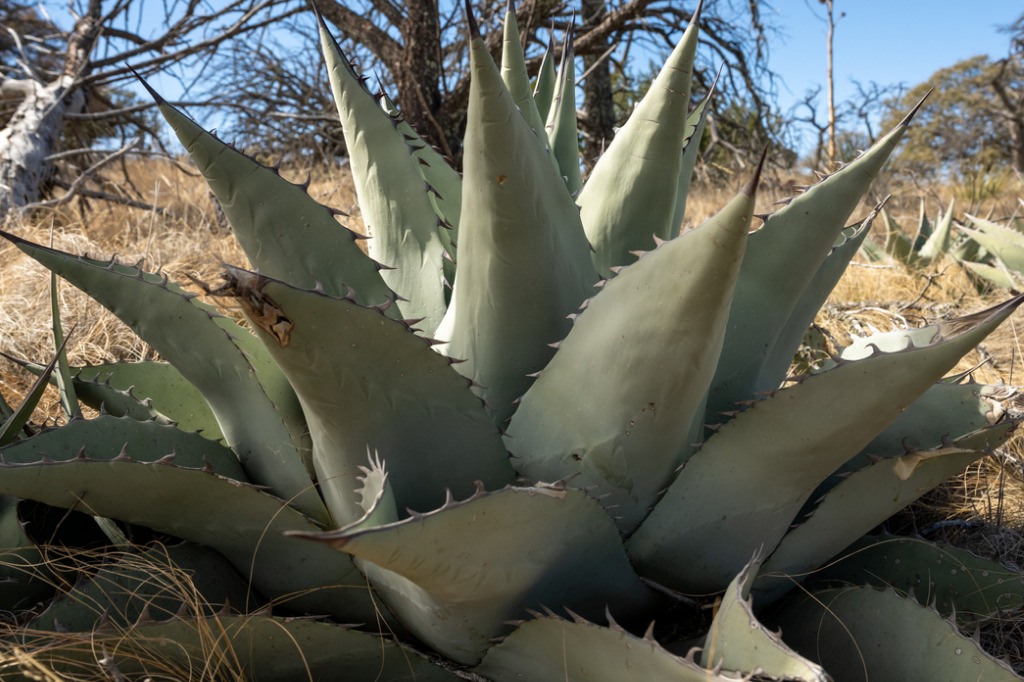Havard's Century Plant
(Agave havardiana)

Description
Agave havardiana is a plant species native to the Big Bend area of western Texas as well as Chihuahua and Coahuila. It prefers grassy to rocky slopes or woodlands at elevations of 1200–2000 m. Agave havardiana is an acaulescent species forming rosettes low to the ground, sometimes creating suckers but not forming large colonies like some other species. Leaves are up to 70 cm (28 inches) long, with teeth along the margins and at the tip. Flowering stalks can be up to 7 m (23 feet) tall, with yellow to yellow-green flowers. Fruits are dry, oblong, up to 6 cm (2.4 inches) long. This species is under threat from habitat loss, mostly for cattle ranching. Agave is a genus of monocots native to the hot and arid regions of the Americas, although some Agave species are also native to tropical areas of South America. The genus Agave (from the Ancient Greek αγαυή, agauê) is primarily known for its succulent and xerophytic species that typically form large rosettes of strong, fleshy leaves. Agave now includes species formerly placed in a number of other genera, such as Manfreda, ×Mangave, Polianthes and Prochnyanthes. Many plants in this genus may be considered perennial, because they require several to many years to mature and flower. However, most Agave species are more accurately described as monocarpic rosettes or multiannuals, since each individual rosette flowers only once and then dies; a small number of Agave species are polycarpic. Maguey flowers are considered edible in many indigenous culinary traditions of Mesoamerica. Along with plants from the closely related genera Yucca, Hesperoyucca, and Hesperaloe, various Agave species are popular ornamental plants in hot, dry climates, as they require very little supplemental water to survive. Most Agave species grow very slowly. Some Agave species are known by the common name "century plant". The succulent leaves of most Agave species have sharp marginal teeth, an extremely sharp terminal spine, and are very fibrous inside. The stout stem is usually extremely short, which may make the plant appear as though it is stemless. Agave rosettes are mostly monocarpic, though some species are polycarpic. During flowering, a tall stem or "mast" ("quiote" in Mexico), which can grow to be 12 metres (40 feet) high, grows apically from the center of the rosette and bears a large number of short, tubular flowers and sometimes vegetatively produced bulbils (a form of asexual reproduction).
Taxonomic tree:







